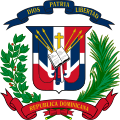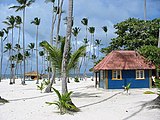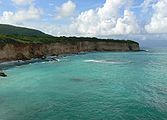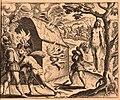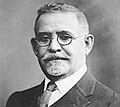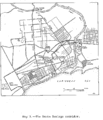Introduction
The Dominican Republic is a country on the island of Hispaniola in the Greater Antilles archipelago of the Caribbean Sea, bordered by the Atlantic Ocean to the north. Geographically, the Dominican Republic is part of the North American continent. It occupies the eastern five-eighths of the island, which it shares with Haiti, making Hispaniola one of only two Caribbean islands, along with Saint Martin, that is shared by two sovereign states. It is the second-largest nation in the Antilles by area (after Cuba) at 48,671 square kilometers (18,792 sq mi), and second-largest by population, with approximately 11.4 million people in 2024, of whom approximately 3.6 million live in the metropolitan area of Santo Domingo, the capital city. The Dominican Republic has the largest economy (according to the U.S. State Department and the World Bank) in the Caribbean region and is the seventh-largest economy in Latin America. Over the last 25 years, the Dominican Republic has had the fastest-growing economy in the Western Hemisphere – with an average real GDP growth rate of 5.3% between 1992 and 2018. GDP growth in 2014 and 2015 reached 7.3 and 7.0%, respectively, the highest in the Western Hemisphere. Recent growth has been driven by construction, manufacturing, tourism, and mining. The country is the site of the third largest (in terms of production) gold mine in the world, the Pueblo Viejo mine. The Dominican Republic is the most visited destination in the Caribbean. The year-round golf courses and resorts are major attractions. A geographically diverse nation, the Dominican Republic is home to both the Caribbean's tallest mountain peak, Pico Duarte, and the Caribbean's largest lake and lowest point, Lake Enriquillo. The island has an average temperature of 26 °C (78.8 °F) and great climatic and biological diversity. The country is also the site of the first cathedral, castle, monastery, and fortress built in the Americas, located in Santo Domingo's Colonial Zone, a World Heritage Site. (Full article...) Selected article -The Dominican Civil War (Spanish: Guerra Civil Dominicana), also known as the April Revolution (Spanish: Revolución de Abril), took place between April 24, 1965, and September 3, 1965, in Santo Domingo, Dominican Republic. It started when civilian and military supporters of the overthrown democratically elected president Juan Bosch ousted the militarily installed president Donald Reid Cabral from office. The second coup prompted General Elías Wessin y Wessin to organize elements of the military loyal to the dictator Reid ("loyalists"), initiating an armed campaign against the "constitutionalist" rebels. Allegations of communist support for the rebels led to a United States intervention in the conflict (codenamed Operation Power Pack), which later transformed into an Organization of American States occupation of the country by the Inter-American Peace Force. Americans and Dominicans skirmished several times but fought only one battle, which occurred on June 15–16, 1965, in the Dominican-held Ciudad Nueva area of the city, where the 82nd Airborne Division lost 5 KIA, 31 WIA, and 3 DOW, while inflicting casualties of 67 KIA and 165 WIA on the Dominican forces. Elections were held in 1966, in the aftermath of which Joaquín Balaguer was elected. Later in the same year, foreign troops departed from the country. The conflict resulted in around 6,000 Dominican casualties and 350 U.S. casualties. (Full article...)General images -The following are images from various Dominican Republic-related articles on Wikipedia.
Selected picture -A view of the coastline at Monte Cristi Province
Selected biography -Juan Luis Guerra Seijas (born 7 June 1957) is a Dominican musician, singer, composer, and record producer. He has sold 15 million records worldwide, making him one of the best-selling Latin music artists. Throughout his career, he has won numerous awards including 24 Latin Grammy Awards, three Grammy Awards, and one Latin Billboard Music Award. He won 3 Latin Grammy Awards in 2010, including Album of the Year. In 2012, he won the Latin Grammy Award for Producer of the Year. Guerra is one of the most internationally recognized Latin artists of recent decades. His popular style of merengue and Latin fusion has garnered him considerable success throughout Latin America. He is also credited for popularizing bachata music on a global level and is often associated with the genre, although his distinct style of bachata features a more traditional bolero rhythm and aesthetic mixed with bossa-nova influenced melodies and harmony in some of his songs. He does not limit himself to one style of music, instead, his music incorporates a wide arrange of diverse rhythms such as merengue, bachata, bolero, balada, fusion, salsa, cumbia, mambo, cha-cha-cha, pop, rock and roll, reggae, classical, R&B, folk, blues, jazz, funk, soul, rock, hip-hop/rap, son cubano, and religious, amongst many others. "Ojalá Que Llueva Café" ("I Wish That It Rains Coffee") is one of his most critically acclaimed pieces. (Full article...)Related portalsWikiProjects
Things to do
Associated WikimediaThe following Wikimedia Foundation sister projects provide more on this subject:
SourcesDiscover Wikipedia using portals | |||||||||||||||||||||||||
